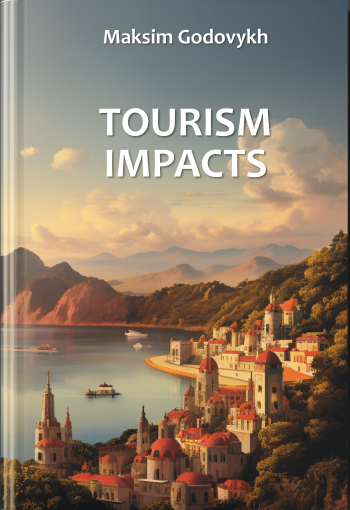Tourism is one of the world’s largest contributors to economic growth, generating substantial revenues, creating countless employment opportunities, and attracting significant investments to destination communities globally. As tourism becomes an economic cornerstone for many regions, local, regional, and national governments increasingly encourage the influx of greater numbers of visitors. However, this increased visitation often has profound social, cultural, environmental, and psychological impacts on destination communities, frequently diminishing the quality of life and well-being of residents.
Current approaches to measuring tourism’s impacts often overlook its negative consequences, focusing instead on metrics such as visitor numbers, revenues, and tax contributions. It is essential, however, to comprehensively understand, measure, and improve the economic, social, environmental, and psychological effects of tourism. This book aims to provide the knowledge, methodologies, measurement practices, and management tools necessary to evaluate and maximize the positive impacts of tourism development on residents’ quality of life, health, and well-being across various types of tourist destinations.
The book is divided into four main parts. The first part lays the foundation by introducing the concept of tourism, offering definitions, tracing the evolution of tourism development, and exploring topics such as supply and demand, tourism competitiveness, the complexity of modern tourism systems, and global challenges. The second part examines the economic, political, social, environmental, health, and psychological effects of tourism, as well as the phenomenon of overtourism. The third part focuses on existing and emerging methodologies for evaluating tourism impacts, covering diverse research approaches, the collection of secondary and primary data, data analysis and visualization techniques, and the development of actionable recommendations for tourism authorities and destination managers. The fourth part explores opportunities to influence tourism’s impacts, addressing sustainability, destination resilience, strategy development, and the application of behavioral insights in destination management and tourism policy.
This book seeks to enhance tourism knowledge and practice by conceptualizing and operationalizing the evaluation of tourism’s economic, social, environmental, and psychological impacts on local communities. The research methods and evaluation techniques described aim to shift tourism statistics and research toward prioritizing the well-being of local residents and to provide innovative approaches for assessing tourism development’s effects on communities.
Students, tourism practitioners, destination managers, and governmental authorities can use this book as a comprehensive guide. By examining the multifaceted impacts of tourism and applying the models, methods, and recommendations presented, managers and policymakers will be better equipped to improve the quality of life, health, and well-being of residents in tourist destinations at local, regional, and national levels.

